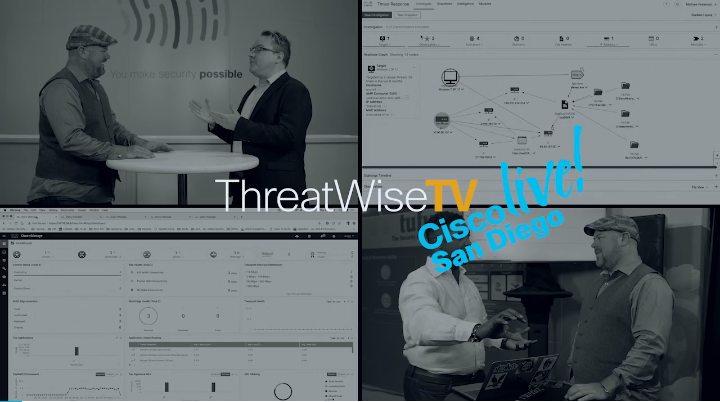
October 24, 2019

The strong relationship with Cisco and Garland Technology encompasses a host of supported products. At this year’s CiscoLive in San Diego, our alliance laid the foundation for an interview with Jason Wright on Cisco’s Threatwise TV. Covering the latest developments in Cisco cybersecurity, this video series featured Garland’s extension of specialized products, focused on ensuring 100% network uptime and visibility. Our Regional Sales Manager, Juan Garza, eloquently voiced why Garland leads in the network visibility space.
The purpose of a TAP is to gain full visibility into network links. Garland’s breadth of network TAP and packet broker technology retrieves packets from the network enabling a set of security application performance and network performance tools, which ranges from 1G Copper to 100G Fiber networks. Using Garland’s EdgeSafe™: Bypass TAPs, inline tools including SSL decryption, next-generation firewalls, and IPS's can mirror traffic to out-of-band tools.
Network TAP technology has been around for a very long time and heavily used in a security infrastructure. As technology and lines rates continue to change, innovations are necessary to support growing speeds. Garland Technology not only brings a seamless customer experience with our Design-It solution, but also pilots innovative technology by:
Garza also touched on our reaction to seeing movement to the cloud, since Garland Technology just launched a fully compatible Cloud TAP, Garland Prisms. This cloud native TAP can perform in public clouds like AWS, Azure, or Google, or used in a private cloud set-up.
Garland Prisms uses SaaS technology in the cloud to send data to cloud tools or through GRE tunneling to on-prem devices in your data center. Garland can receive traffic in the cloud or in a private cloud and channel it back to packet brokers.
In the words of Jason Wright:
“As a Cisco partner, we’re grateful for the relationship and I know these are still important and still relevant to people who are deploying these technologies who want to get things out of band or aggregate into that packet broker fashion that you explained. Thank you so much for the partnership and we appreciate you.”
If you would like to learn more about how we work together, visit garlandtechnology.com/cisco-solutions
If the inline security tool goes off-line, the TAP will bypass the tool and automatically keep the link flowing. The Bypass TAP does this by sending heartbeat packets to the inline security tool. As long as the inline security tool is on-line, the heartbeat packets will be returned to the TAP, and the link traffic will continue to flow through the inline security tool.
If the heartbeat packets are not returned to the TAP (indicating that the inline security tool has gone off-line), the TAP will automatically 'bypass' the inline security tool and keep the link traffic flowing. The TAP also removes the heartbeat packets before sending the network traffic back onto the critical link.
While the TAP is in bypass mode, it continues to send heartbeat packets out to the inline security tool so that once the tool is back on-line, it will begin returning the heartbeat packets back to the TAP indicating that the tool is ready to go back to work. The TAP will then direct the network traffic back through the inline security tool along with the heartbeat packets placing the tool back inline.
Some of you may have noticed a flaw in the logic behind this solution! You say, “What if the TAP should fail because it is also in-line? Then the link will also fail!” The TAP would now be considered a point of failure. That is a good catch – but in our blog on Bypass vs. Failsafe, I explained that if a TAP were to fail or lose power, it must provide failsafe protection to the link it is attached to. So our network TAP will go into Failsafe mode keeping the link flowing.
Single point of failure: a risk to an IT network if one part of the system brings down a larger part of the entire system.
Heartbeat packet: a soft detection technology that monitors the health of inline appliances. Read the heartbeat packet blog here.
Critical link: the connection between two or more network devices or appliances that if the connection fails then the network is disrupted.